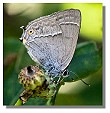
Graphics via Wikimedia
Butterflies of Scotland
- Pearl-bordered Fritillary (Boloria euphrosyne)

The Pearl-bordered Fritillary is orange with black spots on the upperside of its wing and has a wingspan of 38–46 mm (1.5 to 1.8 inches). On the underside of the wings there is a row of silver pearly markings along the edge, which give the species its name. It is often confused with the Small Pearl-bordered Fritillary, but can be distinguished from it by the red chevrons along its pearl border (the Small Pearl-bordered has black chevrons) as well as the presence of a single silver spot in the middle of a row of yellow spots. The female has both darker markings and rounder wings than the male. The caterpillars are black with white or yellow spines along their backs.The males have special scent glands on their wings so that they can be recognised by females of their own species
It is widespread throughout Europe, ranging from Scandinavia to northern Spain and from Ireland eastwards towards Russia and Asia. In recent years it has declined rapidly in many countries and is a highly threatened species. There are scattered colonies in England and Wales, but it is more widespread in Scotland.
The female lays her eggs on dead bracken or leaf litter near to violet plants - Common Dog-violet Viola riviniana, Heath Dog-violet Viola canina and Marsh Violet Viola palustris. Sometimes they are laid on the leaves of the foodplant itself. They are laid singly, not in one large group such as Marsh Fritillary. Eggs can be found on the foodplant from mid-May to the end of June. They are a pale yellow colour. They hatch after 10–14 days.
The emerging caterpillars begin feeding immediately and will moult three times within the first 5–6 weeks. Each caterpillar will then hibernate in a shrivelled leaf at the base of the plant, usually at the end of July. When they awaken the following March, they are half their previous size having shrunk during hibernation. After a period of feeding and growth, during which it moults one last time, the caterpillar is full size and ready to pupate. The chrysalis stage is formed amongst the leaf litter, and lasts just 10–14 days.
The earliest fritillaries to emerge can be found as early as April in woodland clearings or rough hillsides with bracken. The adult butterfly flies between late April and June, being one of the earliest fritillaries to emerge. It will feed on the nectar from early spring flowers such as Bugle, Dandelion (Taraxacum officinale), and Lesser celandine. There is a second brood during August. It is found mainly in woodland clearings with bracken, or leaf litter provided by oak and bramble and in well-drained habitats with mosaics of grass, bracken, and light scrub.
Pearl-bordered Fritillary flies close to the ground, stopping regularly to feed on spring flowers such as Bugle. The butterfly was once very widespread but has declined rapidly in recent decades, and is now highly threatened in England and Wales. The reduction in distribution of this species is primarily due to a decrease in coppicing in woodland, a loss of open areas in forests and inappropriate habitat management.
Return to the Butterfly Index
or go to the next Butterfly:  Purple Hairstreak.
Purple Hairstreak.
Where else would you like to go in Scotland?

